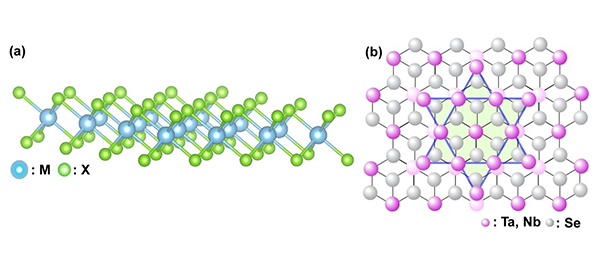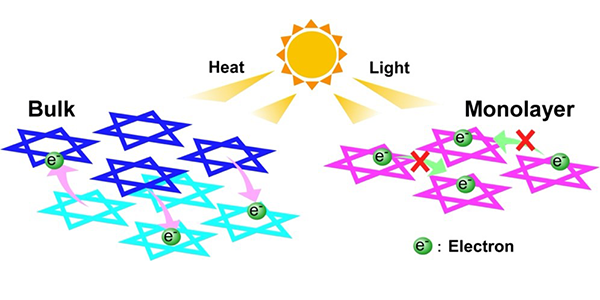Superconductivity - where electrical resistance drops and current continues without power - is a unique property used to enable MRI machines and particle accelerators, but its temperature-based restrictions have limited applications. Superconductivity commences at temperatures well below freezing, but as temperatures increase, the electrical resistance suddenly returns and can break the system. If superconductivity could persist at room temperatures, the potential uses in advanced electronics, energy storage and sustainability could be exponential.
An international team may have taken the first step toward realizing the control needed to induce superconductivity at room temperature. They published their findings on Oct. 7 in Nature Communications.
Led by Takafumi Sato, professor in the Advanced Institute for Materials Research (WPI-AIMR), Tohoku University, the researchers examined a transition metal dichalcogenide made of one tantalum atom and two selenium atoms (1T-TaSe2). This type of metal is atomically thin and exhibits the strange characteristic of transitioning from metal to nonmetal in condensed matter. Its atomic and electron interactions can be manipulated to move it from an electrically conductive material to an electrically resistive one, called a Mott insulator.
"The interplay among electron correlation, dimensionality, and appearance of various quantum phases is a long-standing issue in condensed-matter physics," Sato said, noting that Mott physics and superconductivity appear to be directly related, but experimental exploration has been difficult.
Mott insulators have strong interactions between their electrons. Known as the Coulomb force, these interactions exceed the bandwidth between electrons and atoms in partially filled systems. In 1T-TaSe2, this exotic behavior can be boosted by a charge-density wave, which consists of highly organized, flowing electrons capable of conductivity.

"To functionalize such a complex phase - a two-dimensional charge-density wave in a Mott insulator - it is essential to enhance the transition temperature," Sato said.
Using spectroscopy techniques to examine how the energies and movement shift in the material, the researchers found that the extremely thin insulator appeared to rearrange its components into a Star of David formation. The arrangement, the result of the target complex phase, appeared to depend on control over bandwidths by creating stronger interactions between electrons to hold them in a more ordered fashion. More critically, according to Sato, the arrangement also appeared to withstand higher temperatures and specific attempts to excite the particles into a different organization.

"We discovered a unique, purely two-dimensional Mott insulator phase, which is extremely robust against various perturbations such as heating and photo excitation," Sato said. "This is in sharp contrast to the Mott insulator phase of bulk 3D materials, where the Mott phase can be easily destroyed by such perturbations."
The researchers also examined the complex Mott insulator phase in a different monolayer transition metal dichalcogenide, this one made of one niobium atom and two selenium atoms. They found that this one's typical lattice arrangement was also distorted into a Start of David arrangement by reducing the interlayer hopping of electrons.
According to Sato, while the complex phase commenced at incredibly cold temperatures, it appeared to persist as the material was heated, all the way to 450 Kelvin, which is significantly hotter than room temperature.
"The present result lays the foundation for realizing monolayer charge-density wave-Mott insulator-based devices operating at room temperatures," Sato said. "Our discovery may open pathways toward realizing functional ultrathin Mottronics devices - the next-generation electronics based on Mott insulators."
Next, the researchers plan to better control the complex phase by external means, such as an electric field, as well as search for similar exotic quantum properties in other transition metals.
"This work is only possible because of our international collaboration among Taiwan, China and Japan," Sato said. "Such collaboration, including the combination of our various spectroscopic techniques, played an essential role for our discovery."
- Publication Details:
Title: Robust charge-density wave strengthened by electron correlations in monolayer 1T-TaSe2 and 1T-NbSe2
Authors: Yuki Nakata, Katsuaki Sugawara, Ashish Chainani, Hirofumi Oka, Changhua Bao, Shaohua Zhou, Pei-Yu Chuang, Cheng-Maw Cheng, Tappei Kawakami, Yasuaki Saruta, Tomoteru Fukumura, Shuyun Zhou, Takashi Takahashi, and Takafumi Sato
Journal: Nature communications






